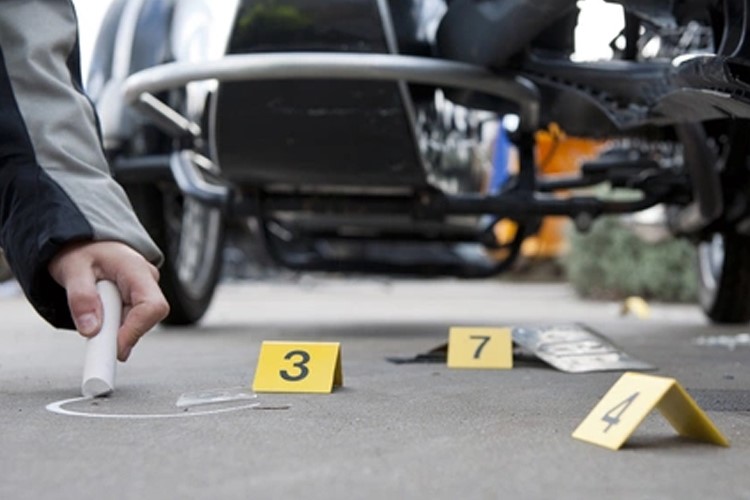
Menu

Services


Accident forensics deals with systematic process of investigating, analyzing and drawing conclusion scientifically about the events and factors that lead to a vehicular collision. An accident investigation typically starts with the inspection of the crash scene and also includes inspection of the vehicle and reconstruction of the accident. Accident forensics uses the principles and process of Physics to determine the cause of accident, speed of vehicle, impact direction, etc. and this can be done only by experts who are experienced and specialized to evaluate these factors and evidence using scientific methods and principles. Accident forensics usually required for insurance companies to pay the claims and for law enforcement to determine if the accident was intentional or otherwise and to establish the role of each vehicle contributing to the accident.
The methods for predicting the impact responses of mechanical systems, such as a vehicle’s response in a crash, can primarily be classified into two groups. In one, the impact is treated as a discontinuous event. A simple form of this type of analysis is usually conducted for accident reconstruction purposes for which each vehicle is modeled as a single body or object. For impact analysis of constrained or jointed systems and also for determination of the structural crash responses of the individual components of a mechanical system, such as the impact responses of the vehicle chassis, suspension systems, steering mechanism, etc., the extension of these traditional procedures are presented here, which involve both normal and frictional impulses, for impact analysis of any general multi-body mechanical system.
When side-slipping starts, the tires makes mark what are called yaw marks, which may have distinct striations within the yaw pattern that are diagonal or even perpendicular to the overall tire mark. Usually, most visible from the outside tires, yaw marks start narrow and get wider as the yaw continues and the vehicle becomes more rotated. In a controlled turning motion, the rear wheels track inside the front wheels. In a yaw, the front and rear wheels cross over each other, resulting in a characteristic crossover point in the yaw pattern that tells the Reconstructionist it is a true yaw.
In accident forensics, establishing contributing negligence involves a comprehensive examination of various factors, including adherence to safety regulations, maintenance practices, risk assessments, communication, training, environmental conditions, and human behavior. At Clue4 Evidence Forensic Lab, our experts evaluate and analyze these elements. By doing so, our forensic auditors can determine the extent of negligence and its role in the accident, providing valuable insights for legal proceedings and organizational improvements. Identifying contributing negligence not only aids in accountability but also helps organizations implement better safety practices to prevent future incidents.
Paint examination in accident forensics is a critical process used to analyze paint evidence found at the scene of vehicular accidents, particularly in cases of hit-and-runs or collisions. At Clue4 Evidence Forensic Lab, our experts provide valuable information about the vehicles involved and help reconstruct the events leading to the accident. Paint examination in accident forensics is a critical process used to analyze paint evidence found at the scene of vehicular accidents, particularly in cases of hit-and-runs or collisions. From Clue4 Evidence Forensic Lab our experts provide valuable information about the vehicles involved and help reconstruct the events leading to the accident.
Glass can serve as trace evidence in various incidents, including vehicular accidents, burglaries, and assaults. During a collision, glass fragments may transfer from one vehicle to another or from a vehicle to a victim. At Clue4 Evidence Forensic Lab, our experts analyze these glass samples, which can help link a suspect vehicle to the scene of the accident, providing crucial evidence for law enforcement and insurance investigations.
Chassis number examination aids in identifying vehicles involved in collisions and ensuring accountability. The chassis number, often referred to as the Vehicle Identification Number (VIN), serves as a unique identifier for each vehicle, containing vital information about its make, model, and year of manufacture. When a vehicle is involved in an accident, especially in cases of hit-and-run incidents, the chassis number can provide essential clues for investigators
About
Academy
Services
Non Profit
Blog
Contact
Questioned Documents
Fingerprint Examination
Digital Forensics
Crime Scene Investigation
Forensic Physics
Forensic Psychology
Business Intelligence
Fraud Investigation
Forensic Auditing
Institute of Investigation Sciences
Institute of Legal Studies
Institute of Behavioural Sciences
Institute of Media
Institute of Creative Arts
Questioned Documents Examination
Fingerprint Examination
Lie Detection
Digital Forensics
Cyber Crime Investigation
DNA Analysis
Accident Forensics
Fire Investigation
Serious Fraud Investigation
PCC
Forensic Auditing
Copyright © 2024. Clue4 Evidence
Designed by Taarruni
The Entrance Test is Chargeable. To take Entrance Test, please make payment of Rs. 850 and fill in the below form along with the proof of payment (transaction ID)